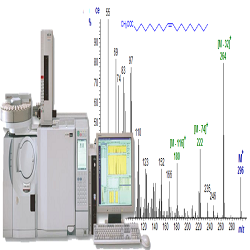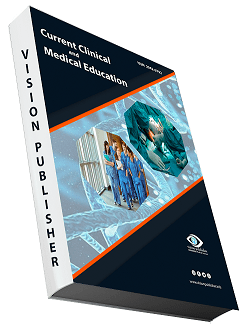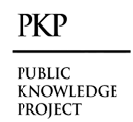Gas chromatography mass spectrometry (GC-MS): A Tool for the Health Care, Environmental, and Pharmaceutical Industries
Keywords:
GC-MS, Medical, Pharmaceutical, ApplicationsAbstract
Analytical techniques like gas chromatography can separate chemicals in complicated combinations according to their polarity. Only substances that are volatile or can be rendered volatile through derivatization with derivatizing agents can be separated. Due to its efficacy, sensitivity, and simplicity, it is one of the most extensively used techniques for compound separation. The difference in partitioning behaviour between the mobile and stationary phases is the basis for compound separation. In this process, a sample is moved through a tube packed with a finely divided solid or a film of liquid by means of a moving gas stream. For the purpose of compound classification, a variety of columns with varying stationary phase compositions have been employed for the purpose of injecting a solvent-containing mixture or sample into the column at a high enough temperature to volatilize the compound
Downloads
References
Mok, D. K. W., & Chau, F.-T. (2006). Chemical information of Chinese medicines: A challenge to chemist. Chemometrics and Intelligent Laboratory Systems, 82, 210–217.
Ni, S.-F., Fu, C.-X., Pan, Y.-J., Lu, Y.-B., Wu, P., & Gilbert, Y. S. (2004). Contrastive analysis of volatile oil from Serissa serissoides in diferent seasons. China Journal of Chinese Materia Medica, 29, 54–58.
Nicholson, J. K., & Wilson, I. D. (2003). Opinion: understanding “global” systems biology: metabonomics and the continuum of metabolism. Nature Reviews Drug Discovery, 2, 668–676.
Qin, N. Y., Yang, F. Q., Wang, Y. T., & Li, S. P. (2007). Quantitative determination of eight components in rhizome (Jianghuang) and tuberous root (Yujin) of Curcuma longa using pressurized liquid extraction and gas chromatography– mass spectrometry. Journal of Pharmaceutical and Biomedical Analysis, 43, 486–492.
Dhont, J.H. Pyrolysis and gas chromatography for the detection of the benzene ring in organic compounds. Nature 1961, 192, 747–748.
Hewitt, G.C.; Whitham, B.T. The identification of substances of low volatility by pyrolysis/gas-liquid chromatography. Analyst 1961, 86, 643–652.
Jones, C.R.; Moyles, A.F. Pyrolysis and gas-liquid chromatography on the microgram scale. Nature 1961, 191, 663–665.
Oro, J.; Han, J.; Zlatkis, A. Application of high-resolution gas chromatography-mass spectrometry to the analysis of the pyrolysis products of isoprene. Anal. Chem. 1967, 39, 27–32.
Merritt, C., Jr.; Robertson, D.H. The analysis of proteins, peptides and amino acids by pyrolysis-gas chromatography and mass spectrometry. J. Chromatogr. Sci. 1967, 5, 96–98.
Biemann, K.; Oro, J.; Toulmin III, P.; Orgel, L.E.; Nier, A.O.; Anderson, D.M.; Simmonds, P.G.; Flory, D.; Diaz, A.V.; Rushneck, D.R.; et al. Search for organic and volatile inorganic compounds in two surface samples from the Chryse Planitia region of Mars. Science 1976, 194, 72–76.
Reinhardt, M.; Goetz, W.; Thiel, V. Testing flight-like pyrolysis gas chromatography–mass spectrometry as performed by the Mars Organic Molecule Analyzer onboard the ExoMars 2020 rover on Oxia Planum analog samples. Astrobiology 2020, 20, 415–428.
Murat, P.; Harohalli Puttaswamy, S.; Ferret, P.J.; Coslédan, S.; Simon, V. Identification of Potential Extractables and Leachables in Cosmetic Plastic Packaging by Microchambers-Thermal Extraction and Pyrolysis-Gas Chromatography-Mass Spectrometry. Molecules 2020, 25, 2115.
Sullivan, G.L.; Gallardo, J.D.; Jones, E.W.; Hollliman, P.J.; Watson, T.M.; Sarp, S. Detection of trace sub-micron (nano) plastics in water samples using pyrolysis-gas chromatography time of flight mass spectrometry (PY-GCToF). Chemosphere 2020, 249, 126179.
Fischer, M.; Scholz-Böttcher, B.M. Simultaneous trace identification and quantification of common types of microplastics in environmental samples by pyrolysis-gas chromatography–mass spectrometry. Environ. Sci. Technol. 2017, 51, 5052–5060.
Kudo, K., et al. (2012) Rapid and Reliable Screening Method for Detection of 70 Pesticides in Whole Blood by Gas Chromatography-Mass Spectrometry Using a Constructed Calibration-Locking Database. Legal Medicine, 14, 93-100.
Tsugawa, H., et al. (2014) Highly Sensitive and Selective Analysis of Widely Targeted Metabolomics Using Gas Chromatography/Triple-Quadruple Mass Spectrometry. Journal of Bioscience and Bioengineering, 117, 122-128.
Dunn, W.B., et al. (2011) Procedures for Large-Scale Metabolic Profiling of Serum and Plasma Using Gas Chromatography and Liquid Chromatography Coupled to Mass Spectrometry. Nature Protocols, 6, 1060-1083
Kind, T., et al. (2009) FiehnLib: Mass Spectral and Retention Index Libraries for Metabolomics Based on Quadruple and Time-of-Flight Gas Chromatography/Mass Spectrometry. Analytical Chemistry, 81, 10038-10048
Eiceman, G.A., Hill, H.H. and Gardea, T.J. (2000) Gas Chromatography. Analytical Chemistry, 72, 137-144

Downloads
Published
How to Cite
Issue
Section
License
Copyright (c) 2024 Dr.Imad Hadi Hameed, Fatima Muhammad Shakhir Najm , Atheer Hussein Ali Weiss , Maryam Salah Kamel

This work is licensed under a Creative Commons Attribution 4.0 International License.
Current Clinical and Medical Education













